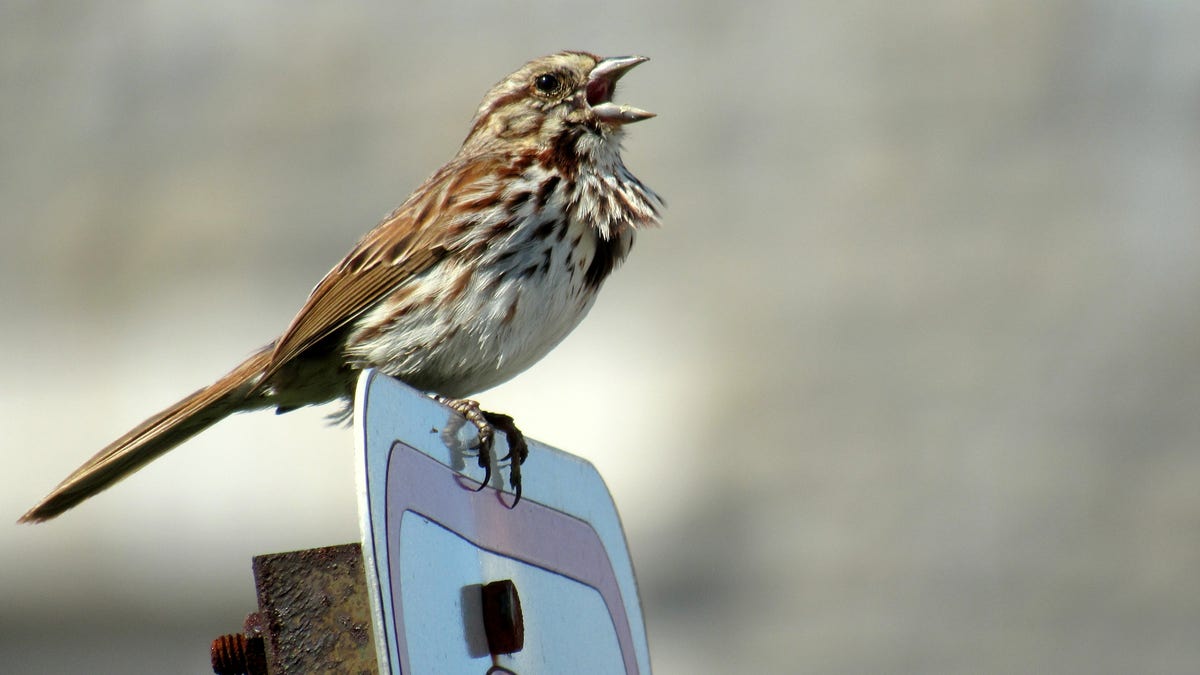
A male song sparrow sings on the Virginia Tech campus. (Scott Davies)
Looking for angry birds? Best check urban or suburban areas, where song sparrows are more likely to be more aggressive than rural birds, a new study shows.
Researchers focused on male song sparrows— 35 in suburban locations, and 38 in rural— and used a speaker to simulate a male song sparrow intruder. Sure enough, the birds in the more urbanized areas were more aggressive in their response behaviors towards the faux intruder than the rural birds.
“The main take-away from our study is that living in an urban area makes song sparrows consistently more territorially aggressive, not just over a short period of time,” Scott Davies, a postdoctoral researcher at Virginia Tech and the first author on the study, told FoxNews.com in an email. “In turn, this suggests that there is something about the habitats of urban song sparrows that makes it more worthwhile for them to spend time and energy defending their patch.”
The scientists used two campuses, Virginia Tech’s and Radford University’s, as study sites to simulate urban bird life. Those areas, which have features like buildings, cars, street lights, and trash cans, were like urban environments, Davies said. The rural areas where the researchers studied the birds were a park near Blacksburg, Virginia, an area around a stream, and a farm.
“To verify that our urban sites were indeed urban, and our rural sites were rural, we used satellite images to measure the proportion of buildings, roads, and vegetation in the kilometer surrounding each site,” Davies said.
The birds on campus responded more powerfully to the speaker than the rural ones, doing things like approaching the speakers and flapping their wings, according to a statement from Virginia Tech.
Related:
From a wildlife conservation point of view, coauthor Davies said that their study builds on other work that shows that animals in city-like places change both their behavior and physiology, or how their bodies typically operate biologically. “For wildlife conservation efforts to be most effective in urban areas, we need to better understand how and why animals change when they live in urban areas,” he said.
The study was published in the journal Biology Letters.
Follow Rob Verger on Twitter: @robverger




















